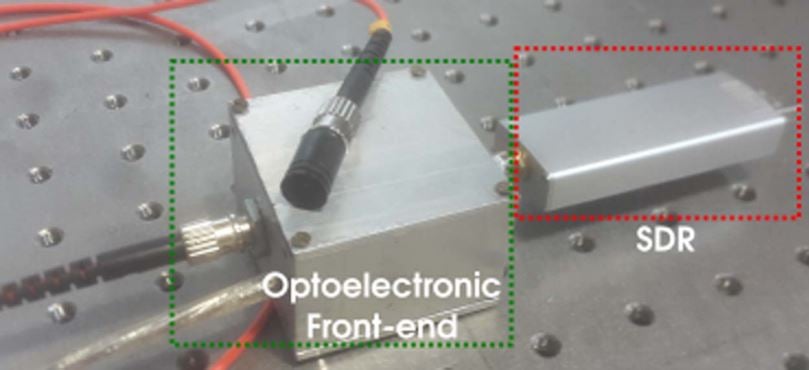An RTL-SDR Based Optical Laser Interferometer Implementation
Thanks to PhD student Lucas Riobó of the University of Buenos Aires, Argentina for submitting his very interesting work on creating a "High-speed real-time heterodyne interferometer" with a low cost RTL-SDR dongle. This is a new application for the RTL-SDR that we have not yet seen.
Interferometers are tools that combine two separate electromagnetic waves (e.g. radio or light) and analyze the interference pattern created by their combination. One usage for example is creating a radio telescope interferometer using multiple small radio dishes. The result is that you can get the same resolution as a much larger dish without the cost of needing to build a huge dish. This has been done before with RTL-SDR's and Pulsar detection.
The paper and concept is fairly complex for someone without a background in optical science, but basically it seems that Lucas has created an optical interferometer that interfaces with an RTL-SDR dongle via a wideband optoelectronic front-end. This allows the optical data to be translated into an RF signal which can then easily be analysed with the low cost RTL-SDR. A system like this reduces costs and allows for much easier data acquisition and processing on the PC. He writes:
As you may know, optical Interferometry is a family of techniques in which the superposition of electromagnetic waves (in the optical range of the spectrum), cause the phenomenon of interference in order to extract information. In this work, we implement an optical heterodyne interferometer. This interferometer, the waves (laser beams) that superpose have a frequency shift f0 between them. When the beams interfere, the intensity from the combination of the beams (interferogram) is a sinusoid signal at a frequency f0 (i.e. a carrier signal). In this work, one of the beams reflects over a sample that has a mechanical deformation. Therefore, this information is encoded in the phase of the carrier signal.
We applied the RTL-SDR dongle to demodulate the carrier signal to extract the phase information. Instead of using an antenna, we put a photodiode with a transimpedance amplifier (TIA). Thus, since the signal obtained from the photodiode and the TIA is proportional to the interferogram, the phase/frequency recovery techniques are the same as those used in telecommunications systems (i.e. we can use many demodulation algorithms developed by the community).
The OSA paper linked in the above text is behind a paywall, but Lucas has also shared with us a related paper research paper published in the University of Buenos Aires' Revista Elektron journal. Lucas also writes that you can freely contact him at [email protected] if you would like further information about the project.

Hello
very interesting! what about vibrations with larger displacement amplitude, for example larger than 1 micrometer?
Hello Johnn.
It’s a continuous detector. The displacement of the surface is encoded in the phase of the carrier signal. In this case, since the displacement is very small (3.5 to 122 picometers) the signal behaves as a FM signal with low modulation depth.
The surface is deformed, in the work we show the measurements in three different points over the surface.
If you want the article, send me an email.
Best,
Lucas.
Cool
So it’s basically a binary detector at this point? Flat vs deformed surface?